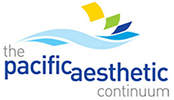
Gary Vaughn, CDT, CTO
The challenges facing dentists and the laboratory alike in achieving optimal results while practicing comprehensive dentistry finished aesthetically are many. Achieving proper axial inclination, correcting the gummy smile, battling cranial, facial, and labial asymmetries, expanding buccal corridors to widen the smile, parameters of biological width. The list goes on and on.
Perhaps none of these are more challenging than the “renegade” dark prep shade (stump), right smack dab in the middle of the arch form. The choices we have at our disposal in solving this particular problem have increased substantially over the past decade or so. Necessity has been called the “Mother of Invention.” Nowhere any more than in dentistry has that old saying become more evident. As the public at large becomes increasingly more aware and demanding of impeccable aesthetic results in smile design, it is incumbent to have more than one or two “arrows in the quiver.” Options are always a welcome comfort. We can probably all remember the days when alternatives were limited either to keeping our fingers crossed that the bleaching treatment administered to the RCT would brighten up the prep enough or we would have no alternative but to use a PFM. Some practitioners would even painstakingly “roll the dice” and try to retrieve metal posts from an endodontically treated teeth and refill them with a more tooth colored material.
These are all options which, by the way, are still practiced and often times produce successful results. “Ditching” the prep at the CE junction, when bonding a veneer and filling it with light colored composite, has also been implemented for years as a solution to masking out a pesky, dark looking prep at the margin. Many of the doctors we work with are masterfully skilled with using try-in pastes, some right out of the syringe. While others carefully mix specific ratios of white, universal, brown or pink to mask out the darkness of a stubborn prep shade. Certainly, another old adage applies here: “Whatever works best in your hands….” Which is your “go to” method?
Some months ago, Dr. Thomas Dudney, Clinical Director of Pacific Aesthetic Continuum, documented a case that will be published soon by Inside Dentistry. The case features the classic smile design treatment plan that presents itself with a smile arch of very consistent prep shades with the exception of tooth #10. It is so dark that there is no stump shade guide to properly portray it. Dr. Dudney sent the case to Corr Dental Designs. We discussed the case at length, entertaining all options. Because of copyright laws, I am not at liberty to share images or article content until after it’s publication, to which I really look forward. However, I can tell you that in this particular case, after weighing all of the options, it was determined that the best solution was to fabricate a milled Zirconia coping that would completely mask out the unmanageable prep shade. It was further decided that with the use of photography, we could determine which e.max (Ivoclar Vivadent) porcelain powders would be most appropriate to match the adjacent restorations that were to be made of pressable e.max (lithium disilicate.)
Although even as recently as a few years ago, because of the bright, white, opacious nature of the first generation of zirconia introduced to us in dentistry: I might have been reluctant to use this option. However with the introduction of shaded pucks, the game has substantially changed. Imagine being able to mill out a coping in the properly shaded zirconia that very closely replicates the natural shade of all the other adjacent preparations. As long as a skillful ceramist can determine the proper value associated with the build-up porcelain as it relates to the pressable materials used on the adjacent teeth, you have achieved nirvana, (or something very close.) You will need to trust me on this one, but see what you think when Dr. Dudney’s article emerges. In conclusion, we would never rule out any of the methods and techniques described in this article or any others that are not mentioned. Anything the dentist can do in the operatory, helps minimize the challenge presented to the laboratory. That being said, suffice it to say that a zirconia coping with appropriately built porcelain is a viable alternate solution to the maverick dark stump shade problem we all face in the world of smile design.
If you have questions about this article or if you would like to send a case, please contact the Pacific Aesthetic Laboratory Group at www.pacificaestheticdentalstudio.com, Gary Vaughn, CDT, CTO (916) 786-6740, or via email [email protected].
